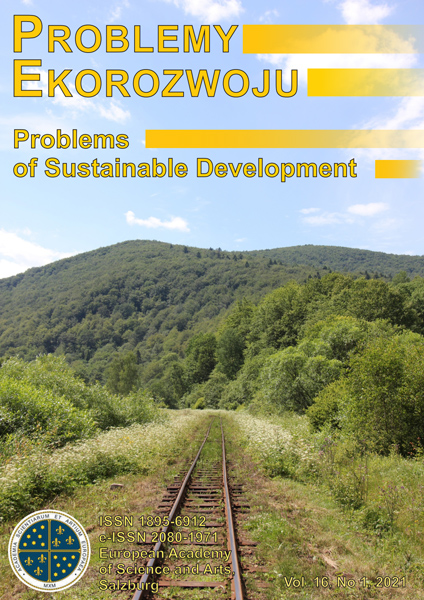ACEMOGLU D., JOHNSON S., 2007, Disease and development: the effect of life expectancy on economic growth, in: Journal of political Economy, 115(6), p. 925-985, https://doi.org/10.1086/529000.
DOI: https://doi.org/10.1086/529000
ACEMOGLU D., RESTREPO P., 2017, Secular stagnation? The effect of aging on economic growth in the age of automation, in: American Economic Review, 107(5), p. 174-179, https://doi.org/10.1257/aer.p20171101.
DOI: https://doi.org/10.1257/aer.p20171101
AHMAD M., KHAN R. E. A., 2019, Does demographic transition with human capital dynamics matter for economic growth?, A dynamic panel data approach to GMM, in: Social Indicators Research, 142(2), p. 753-772, https://doi.org/10.1007/s11205-018-1928-x.
DOI: https://doi.org/10.1007/s11205-018-1928-x
AHSAN H., HAQUE M. E., 2017, Threshold effects of human capital: Schooling and economic growth, in: Economics Letters, 156, p. 48-52, https://doi.org/10.1016/j.econlet.2017.04.014.
DOI: https://doi.org/10.1016/j.econlet.2017.04.014
BARRO R. J., LEE J. W., 2013, A new data set of educational attainment in the world, 1950-2010, in: Journal of development economics, 104, p. 184-198, https://doi.org/10.1016/j.jdeveco.2012.10.001.
DOI: https://doi.org/10.1016/j.jdeveco.2012.10.001
BARRO R. J., SALA-I-MATIN X., 2003, Economic growth (2nd ed.), MIT Press, Massachusetts.
BLOOM D. E., CANNING D., SEVILLA J., 2001, Economic growth and the demographic transition, (No. w8685), National Bureau of Economic Research, https://doi.org/10.3386/w8685.
DOI: https://doi.org/10.3386/w8685
BLOOM D. E., CANNING D., SEVILLA J., 2003, The demographic dividend: A new perspective on the economic consequences of population change, Rand Corporation.
DOI: https://doi.org/10.7249/MR1274
BLOOM D. E., CANNING D., FINK G., FINLAY J. E., 2007, Does age structure forecast economic growth?, in: International Journal of Forecasting, 23(4), p. 569-585, https://doi.org/10.1016/j.ijforecast.2007.07.001.
DOI: https://doi.org/10.1016/j.ijforecast.2007.07.001
BLOOM D. E., CANNING D., FINK G., FINLAY J. E., 2009, Fertility, female labor force participation, and the demographic dividend, in: Journal of Economic growth, 14(2), p. 79-101, https://doi.org/10.1007/s10887-009-9039-9.
DOI: https://doi.org/10.1007/s10887-009-9039-9
BOUCEKKINE R., DE LA CROIX D., LICANDRO O., 2002, Vintage human capital, demographic trends, and endogenous growth, in: Journal of Economic Theory, 104(2), p. 340-375, https://doi.org/10.1006/jeth.2001.2854.
DOI: https://doi.org/10.1006/jeth.2001.2854
CERVELLATI M., SUNDE U., 2015, The economic and demographic transition, mortality, and comparative development, in: American Economic Journal: Macroeconomics, 7(3), p. 189-225, https://doi.org/10.1257/mac.20130170.
DOI: https://doi.org/10.1257/mac.20130170
COOLEY T. F., HENRIKSEN E., NUSBAUM C., 2019, The Growth-Cost of Demographic Change in Europe, preliminary publication in: Review of Economic Dynamics, 352, p. 1-30, https://economicdynamics.org/meetpapers/2019/paper_1352.pdf.
CUARESMA J. C., DOPPLELHOFER G., HUBER F., PIRIBAUER P., 2018, Human capital accumulation and long-term income growth projections for European regions, in: Journal of Regional Science, 58(1), p. 81-99, https://doi.org/10.1111/jors.12339.
DOI: https://doi.org/10.1111/jors.12339
FAGGIAN A., PARTRIDGE M., MALECKI E. J., 2017, Creating an environment for economic growth: creativity, entrepreneurship or human capital?, in: International Journal of Urban and Regional Research, 41(6), p. 997-1009, https://doi.org/10.1111/1468-2427.12555.
DOI: https://doi.org/10.1111/1468-2427.12555
FERNIHOUGH A., 2017, Human capital and the quantity–quality trade-off during the demographic transition, Journal of Economic Growth, 22(1), p. 35-65, https://doi.org/10.1007/s10887-016-9138-3.
DOI: https://doi.org/10.1007/s10887-016-9138-3
GALOR O., 2012, The demographic transition: causes and consequences, in: Cliometrica, 6(1), p. 1-28, https://doi.org/10.1007/s11698-011-0062-7.
DOI: https://doi.org/10.1007/s11698-011-0062-7
HANSEN C. W., LONSTRUP L., 2015, The rise in life expectancy and economic growth in the 20th century, in: The Economic Journal, 125(584), p. 838-852, https://doi.org/doi.org/10.1111/ecoj.12261/
DOI: https://doi.org/10.1111/ecoj.12261
HANUSHEK E. A., 2016, Will more higher education improve economic growth?, Oxford Review of Economic Policy, 32(4), p. 538-552, https://doi.org/10.1093/oxrep/grw025.
DOI: https://doi.org/10.1093/oxrep/grw025
LEE R. D., 2001, Demographic change and fiscal policy, Cambridge University Press.
LEE R. D., 2003, The demographic transition: three centuries of fundamental change, in: Journal of economic perspectives, 17(4), p. 167-190, https://doi.org/10.1257/089533003772034943.
DOI: https://doi.org/10.1257/089533003772034943
LOCAS JR. R. E., 2015, Human capital and growth, in: American Economic Review, 105(5), p. 85-88, https://doi.org/10.1257/aer.p20151065.
DOI: https://doi.org/10.1257/aer.p20151065
MALMBERG B., 1994, Age structure effects on economic growth – Swedish evidence, in: Scandinavian Economic History Review, 42(3), p. 279-295, https://doi.org/10.1080/03585522.1994.10415889.
DOI: https://doi.org/10.1080/03585522.1994.10415889
MCGRATH P., 2016, The Relationship between Human Capital and Economic Growth in Ireland, SSRN 2872739, https://doi.org/10.2139/ssrn.2872739.
DOI: https://doi.org/10.2139/ssrn.2872739
NAGARAJAN N. R., TEIXEIRA A. A., SILVA S.T., 2016, The impact of an ageing population on economic growth: an exploratory review of the main mechanisms, in: Análise Social, 218, p. 4-35, https://www.jstor.org/stable/43755167 (1.10.2019).
PASICHNYI M., KANEVA T., RUBAN M., NEPYTALIUK A., 2019, The impact of fiscal decentralization on economic development, in: Investment Management and Financial Innovations, 16(3), p. 29-39. https://doi.org/10.21511/imfi.16(3).2019.04.
DOI: https://doi.org/10.21511/imfi.16(3).2019.04
PELINESCU E., 2015, The impact of human capital on economic growth, in: Procedia Economics and Finance, 22, p. 184-190. https://doi.org/10.1016/S2212-5671(15)00258-0.
DOI: https://doi.org/10.1016/S2212-5671(15)00258-0
ROMER P. M., 1990, Endogenous technological change, in: Journal of political Economy, 98 (5, Part 2), p. S71-S102, https://doi.org/10.1086/261725.
DOI: https://doi.org/10.1086/261725
SANCHEZ-ROMERO M., LEE R. D., PRSKAWETZ A., 2018, Redistributive effects of different pension structures when longevity varies by socioeconomic status in a general equilibrium setting, Population Association of America, p. 1-56, https://www.econstor.eu/handle/10419/203628 (1.10.2019).
TEIXERA A. A., QUEIROS A. S., 2016, Economic growth, human capital and structural change: A dynamic panel data analysis, in: Research policy, 45(8), p. 1636-1648, https://doi.org/10.1016/j.respol.2016.04.006.
DOI: https://doi.org/10.1016/j.respol.2016.04.006
The European Commission Database, 2019, https://ec.europa.eu/eurostat/data/database (21.11.2019).
The International Monetary Fund Database, 2019, https://www.imf.org/en/Data (21.11.2019).
The OECD Data, 2019, https://stats.oecd.org/ (21.11.2019).
The World Bank Open Data, 2019, https://data.worldbank.org/ (21.11.2019).
UDDIN G. A., ALAM K., GOW J., 2016, Population age structure and savings rate impacts on economic growth: Evidence from Australia, in: Economic Analysis and Policy, 52, p. 23-33, https://doi.org/10.1016/j.eap.2016.08.002.
DOI: https://doi.org/10.1016/j.eap.2016.08.002







